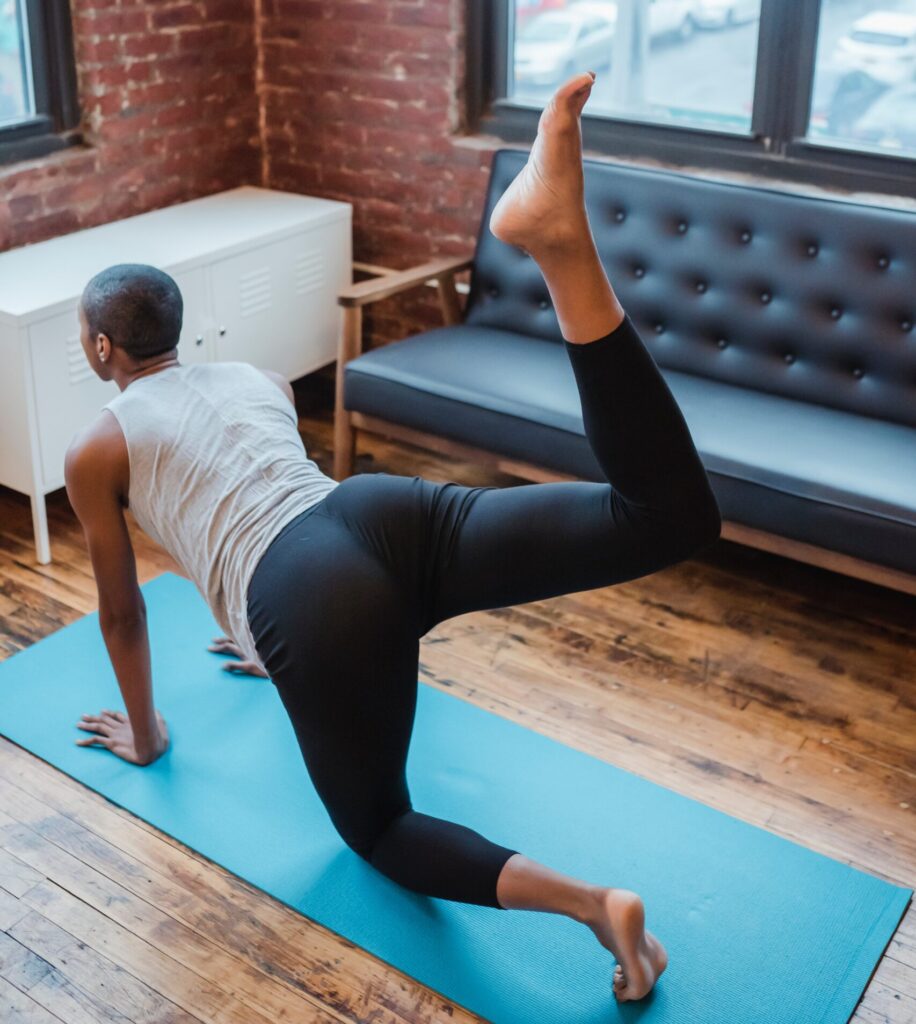Pilates is a form of workout that has been gaining popularity recently. It is a low-impact exercise focusing on strengthening the core muscles and improving flexibility. Pilates is good for the body in many ways, including improving posture, reducing stress, and increasing overall strength.
This post explores why Pilates is good for the body, its unique workout approach, and the different forms it takes, including Reformer Pilates and Wall Pilates. Additionally, we will delve into the distinctions between Pilates and yoga, shedding light on each practice’s unique contributions.
Why Pilates is Good for the Body
Pilates is more than just a workout; it’s a holistic approach to physical well-being that emphasizes core strength, flexibility, balance, and coordination. Through a series of controlled, precise movements, Pilates targets both large and small muscle groups, promoting improved posture and alignment. By engaging in Pilates regularly, practitioners can expect to experience a plethora of benefits, including:
- Core Strength: At the heart of Pilates lies a focus on strengthening the core muscles, including the abdominal, back, and pelvic floor muscles. A strong core contributes to better stability, reduced back pain, and improved overall body strength.
- Flexibility: Pilates incorporates stretching and lengthening movements that promote improved flexibility. This increased range of motion can help prevent injuries and enhance overall mobility.
- Posture Enhancement: Pilates encourages awareness of body alignment, leading to improved posture. Proper posture not only contributes to a more confident appearance but also helps prevent strain on the spine and surrounding muscles.
- Balance and Coordination: The precise and controlled movements in Pilates require concentration and coordination. Over time, this can lead to enhanced balance and better body awareness.
- Low-Impact Workout: Pilates is gentle on the joints, making it suitable for people of all ages and fitness levels. It is particularly beneficial for individuals recovering from injuries or seeking a low-impact exercise option.
-

Photo by Klaus Nielsen
The Pilates Workout Approach
Pilates workouts involve a series of exercises that can be performed on a mat or specialized equipment such as the reformer, which utilizes resistance springs. The emphasis on controlled movements and proper breathing techniques helps practitioners connect with their bodies on a deeper level. This mind-body connection is a fundamental aspect of Pilates, promoting relaxation and reducing stress.
Forms of Pilates
There are several different forms of pilates available, including reformer pilates and wall pilates.
- Reformer Pilates: The reformer is a specialized piece of equipment that provides resistance through a system of springs and pulleys. Practitioners perform a variety of exercises on the reformer, targeting different muscle groups while promoting strength, flexibility, and balance.
- Wall Pilates: Wall Pilates involves using a wall or other vertical surfaces as support during exercises. This form adds a unique dimension to traditional Pilates movements, challenging stability and alignment in new ways.
-

Photo by Klaus Nielsen
Is Pilates different from Yoga?
While pilates and yoga share some similarities, there are also some key differences between the two practices. Pilates is more focused on building strength and improving posture, while yoga is more focused on flexibility and relaxation. Additionally, pilates tends to involve more repetitions of each exercise, while yoga poses are usually held for longer periods of time.
While both Pilates and yoga focus on the mind-body connection and offer numerous physical benefits, they differ in several key aspects:
- Focus: Pilates primarily emphasizes physical strength, core engagement, and alignment. Yoga, on the other hand, incorporates a broader spiritual and meditative element, including breathing techniques, mindfulness, and sometimes even chanting.
- Movement: Pilates exercises often involve repetitive and controlled movements with a focus on muscle engagement. Yoga encompasses a wider range of movements and poses, promoting flexibility and balance through flowing sequences.
- Breathing: In Pilates, breathing is coordinated with movement to engage the core and promote stability. Yoga places greater emphasis on various breathing techniques (pranayama) that can have different effects on the body and mind.
- Spiritual Aspect: While Pilates is primarily a physical practice, yoga has a spiritual and philosophical foundation that varies among different styles, such as Hatha, Vinyasa, and Kundalini.
Overall, pilates is a great workout option for anyone looking to improve their overall fitness and well-being. With its focus on core strength, flexibility, and low-impact movements, it is a great way to get in shape and feel great. Whether you choose reformer pilates, wall pilates, or another form of practice, you are sure to enjoy the many benefits that pilates has to offer.
READ ALSO
- 5 Cheap & Healthy Drinks to Replace Soda With
- Why you’re always having Headaches and Migraines
- Top 5 Nigerian Seasonal Fruits & Their Health Benefits















